By Iric Nathanson
On a sunny May afternoon, a several hundred people gathered in front of Lake Harriet Lower School. They had come to the South Minneapolis school, formerly known as Audubon, to celebrate Lake Harriet’s centennial.
That afternoon, the school’s principal, Angie Ness, came out to greet the crowd carrying a small copper box. Ness explained that a former maintenance worker, known affectionately as Engineer Mike, had discovered the box, encased in a cement block, when an addition to the school was under construction in 2014.
“Mike took a sledge hammer to block and when it came apart this box, a time capsule from 1954, popped out. We thought this centennial celebration would be the right time to open the capsule,” Ness said.
The crowd cheered as Ness pried open the box that had been hidden away at the school for 60 years. Inside she discovered a Minneapolis Tribune newspaper dated Sept. 2, 1954. The headline story on the front page told about a U.S. Senate investigation of Wisconsin Senator Joseph McCarthy, a controversial anti-Communist crusader. Inside the paper, in the sports session, the Tribune reported on the Minneapolis Millers 9 to 7 victory over the Kansas City Blues at Nicollet Park. The capsule also included a Minneapolis school directory for a 1953-54 and a September Time magazine featuring the Italian film star Gina Lollobrigida on the cover.
No time capsules were hidden away when Audubon was built in 1924. But the South Minneapolis school did have a treasure trove of early historic artifacts that remained out of sight for 70 years. The artifacts were discovered in 1995 by Lonnie Jaworski, a carpenter who was sprucing up one of the school classrooms. “He had just removed a blackboard when a dozen drawings dropped from behind the board,” The Southwest Journal reported. “Jaworski glanced at them and realized he wasn’t looking a waste paper. Each drawing, by an Audubon student was signed and most were dated 1925.”
One drawing depicted school rules; declaring that students should be kind, respectful and quiet in the halls. Another told about a new street built in from of the school that replaced an earlier unstable roadway built on peat. A third was a drawing a football player wearing a leather helmet.
When Audubon was built in 1924, it served an attendance zone at the west end of the Linden Hills neighborhood. Linden Hills, one of the city’s oldest neighborhoods, traced its origins to the late 19th century when it was a small residential enclave overlooking Lake Harriet.
By the mid-1920s, the Linden Hill residential district had expanded along the route of the Como Harriet street car line at 44th Street, reaching the western city limits at France Avenue. That expansion prompted the Minneapolis Board to build the new school to serve an attendance zone that was not yet fully developed.
By 1930, many blocks were filled in with houses built during the economic boom years that preceded the Great Depression. The Depression, followed by the war years of the 1940s, slowed Linden Hills’ further development. That slowdown continued until the post-war period when a construction spurt brought new families with school age children to the Audubon district. The School Board responded to the school’s burgeoning enrollment by building Audubon’s 1954 addition. Sixty years later, a second addition would be added.
The 1954 addition honored the school’s namesake, John James Audubon, the famous American naturalist known for his drawings and paintings of American birds. The hallway in the school’s new section was decorated with ceramic tiles depicting Audubon’s birds.
The tiles are still there but the school’s ties to the famous naturalist were severed in 2000 when Audubon was paired with Fulton School at 49th and Vicent. Both were renamed Lake Harriet Community School with the former Audubon identified as the Lower Campus and the former Fulton designated the Upper Campus. Today, the Lower Campus serves children from kindergarten through second grade.
“Our school may have a relatively new name, but it has a proud history,” Ness says. “The building has been here for 100 years, but this school is much more than a building. It is really a center – a focal point – of this community. It serves as the heart of the neighborhood where families come together. They get know one another. They are able to make long lasting friendships.
“The anniversary has been important to so many of us because it has given us this opportunity to celebrate our community and 100 years of learning at this special place.”
Editor’s note: Author Iric Nathanson attended the school he wrote about.

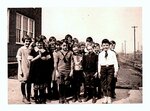
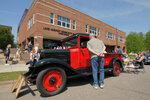
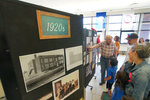

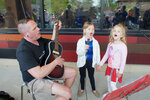
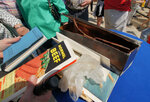
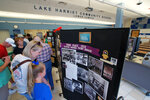
Comments
No comments on this item Please log in to comment by clicking here